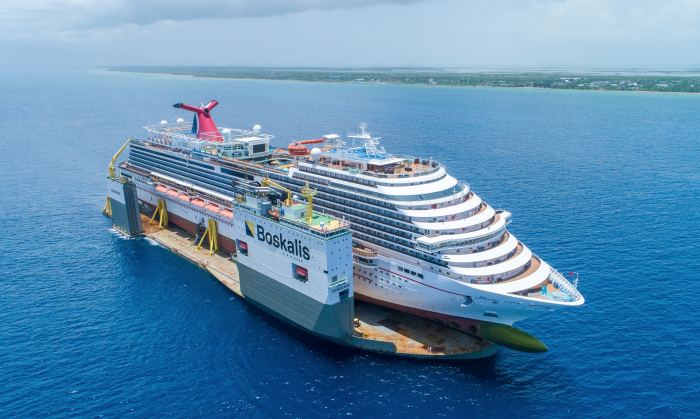Over the past century, Boskalis has executed hundreds of pioneering hydraulic engineering projects around the world. Many of them focused on flood prevention. Boskalis has since become a leading global player in coastal defense and riverbank protection. In the battle against the consequences of rising sea levels and more extreme weather, the company distinguishes itself not only by an impressive amount of expertise and advanced equipment, but especially by the innovative and groundbreaking approach. Over the past few decades, Boskalis has developed innovative, sustainable solutions for numerous clients, including various smart methodologies resulting from the Building with Nature philosophy, which make use of the forces of nature. In this article we present three examples of pioneering flood protection projects: the Houtrib dike and Wadden Sea dike Eemshaven-Delfzijl in the Netherlands and Southsea in England.
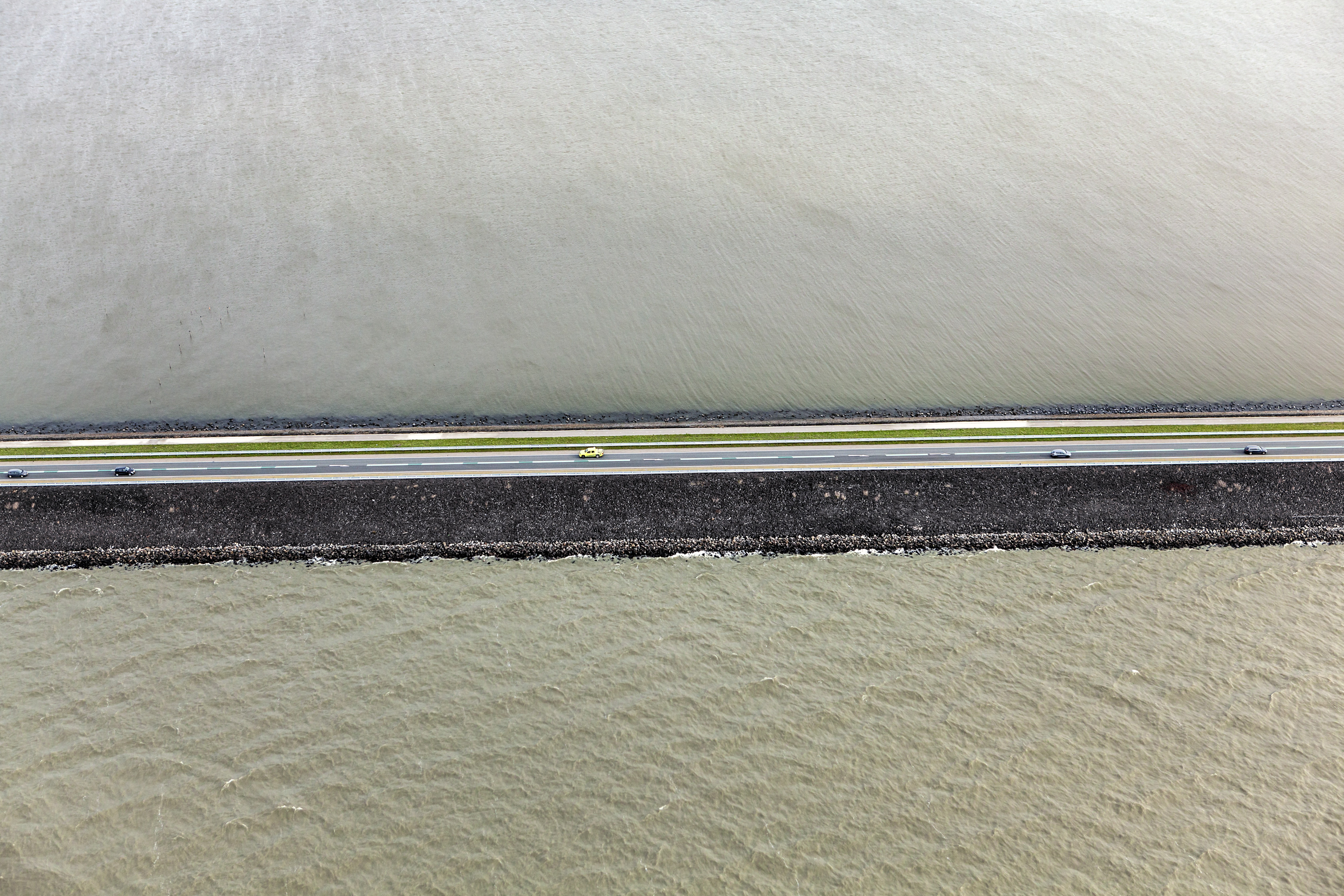
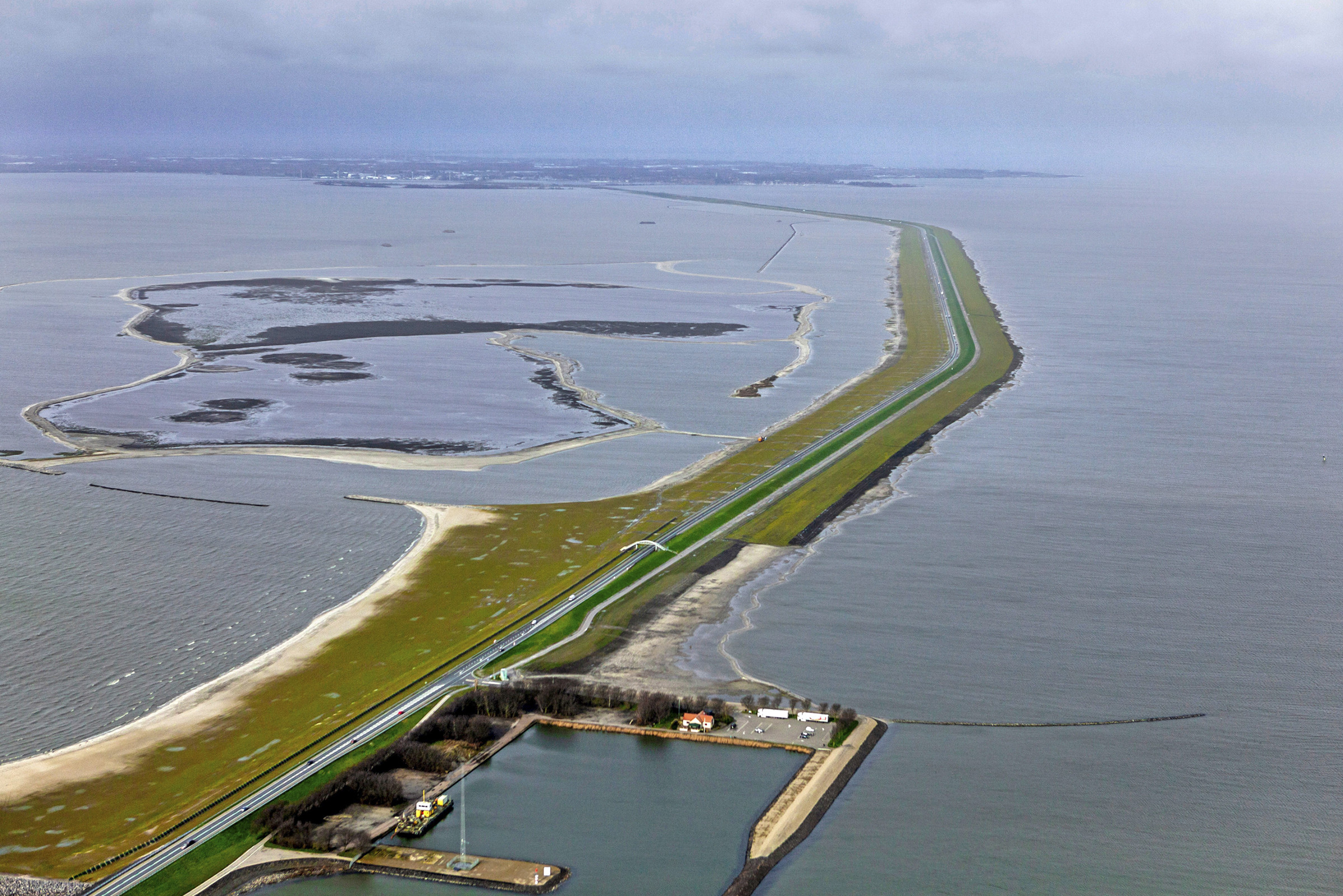
‘Green’ Houtrib Dike keeps northern Netherlands safe
“This project not only contributes to the safety of the north of the Netherlands, it also improves the ecological system and the water quality in the Markermeer lake.” Project Director Corné Appelo talks about the strengthening of the 25-kilometer-long Houtrib dike between Enkhuizen and Lelystad that Boskalis and a partner were responsible for. The project was executed for Rijkswaterstaat (the Dutch Directorate General for Public Works and Water). It consisted of the strengthening of the dike with sand and stone, the creation of a water sports beach, the renovation of several large moles and the introduction of vegetation on the new beaches.
A novelty was the creation of wide sandy foreshores on either side of the dike between Enkhuizen and the Trintel harbor, halfway along the dike. “This Building with Nature approach in a large freshwater lake without tides is a world first,” says Corné. “We created sheltered areas and soft banks with gentle inclines that give new plant and animal species a chance. That implies that the beaches alongside the dike are not meant for leisure activities.” The sandy beaches are 150 meters wide on either side, with about 75 meters being under water. “We used a suction dredger to extract approximately eight million cubic meters of sand from two nearby borrow areas and deposited it on either side of the dike. To protect the sandbanks on the Markermeer lake side, we have built new rock groins on the foreshore.”
Ecology
The Houtrib dike is one of the connecting roads between the western and eastern parts of the Netherlands. The dike was constructed as part of the plan to transform the Markermeer lake into a polder, a plan that never came to fruition. “The Houtrib dike divides the IJsselmeer lake into two large water bodies, limiting the storm surge and therefore the rise in the water level on the coast of the IJsselmeer,” says Corné. “The dike no longer complied with the latest flood protection standards. That means the most important objective of this project was to keep the provinces around the IJsselmeer safe.” Even so, nature management also played a major role. The Houtrib dike has had a negative effect on the ecology of the Markermeer lake. A thick layer of silt formed on the bed, threatening the quality of the water and the ecological systems. “We constructed the Marker Wadden nature area to remedy that situation,” says Corné. “During the design of the Houtrib dike project, we took the insights and experiences developed during that process into account.”
Fantastic nature area
In the Markermeer lake, a 500-hectare nature area called Trintelzand was constructed. In terms of structure, this area is very similar to the Marker Wadden. “Before we could bring in the sand for the sandy foreshores from the two sand borrow areas, we first had to remove a six-meter-thick layer of unsuitable clay and peat soil. So we used sand to create a number of ring dikes. In the next phase, we deployed two cutter suction dredgers to deposit all the unsuitable soil inside the ring dikes. In time, that will become a fantastic nature area with sandbanks, mudflats and reed banks,” says Corné. “New plant species will colonize the area. There will also be mussels, snails and water insects that will, in turn, attract birds.”
Geotextiles and mastic asphalt
On the eastern section the dike was reinforced on either side with broken rock. “Before laying the bottom layer of rock on the seabed, we applied about 400,000 square meters six-meter-wide strips of geotextile, using a newly developed machine,” says Corné. Above the waterline, the rocks were fixed in place with a layer of mastic asphalt at a temperature of 130°C, using an innovative way of working.
Logistical challenges
The eastern part of the dike is more exposed to storms and the water is also deeper here. “We have placed a total of 1.2 million tons of rock here, half of which consisted of recycled rock we took from the existing dike. The ‘new’ rock was brought in on cargo vessels from Belgium and Germany. Another logistical challenge consisted of the strict environmental requirements, which stipulated, among other things, that we couldn’t work on all dike sections in certain seasons, because of the bird and bat populations. Obviously, that lead to all kinds of logistical puzzles. But we managed to complete the project in time successfully.”
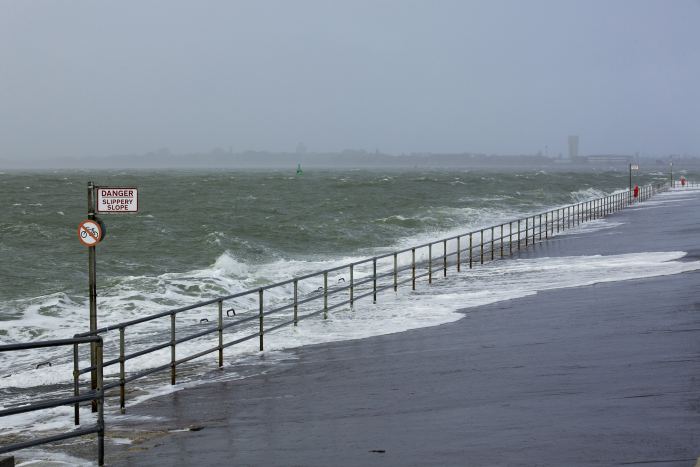
A stretch of coastline near Southsea in England
Reinforcing and refurbishing the English coastline
Boskalis Westminster is raising and strengthening the coastline near Southsea on the English south coast. The project will take approximately five years to complete. “Our project protects more than eight thousand homes and seven hundred business premises over a 4.5-kilometer stretch,” says managing director Paul de Jong.
“Southsea is located on the Portsmouth peninsula and it has a long and fascinating history,” says Paul. “The construction of the coastal defenses dates back many hundreds of years. Since then, they have been raised on numerous occasions and improvised repair work has been done but a structural solution is now needed.” Southsea is a popular location with numerous tourist attractions. “The beaches have been eroded and the current coastal defenses have been breached several times recently,” says Paul. “Our job is to protect the coast against flooding and the possible consequences of climate change for at least one hundred years.”
Six sections
“We are reinforcing and refurbishing six different sections of the coastline,” Paul continues. “In the tender phase of the project, our engineering team submitted a number of well thought-out design proposals. Our partner Volker Stevin is responsible for the facelift of the coastline and for redesigning the promenades. Each of the six sections will be tackled differently. The final designs have been worked out in close consultation with the client.” The operational phase started in March of this year. “To raise the level of the promenade and build a hard seawall, we are going to bring in 175,000 cubic meters of rock from France,” says Paul. “In addition, we will deploy our trailing suction hopper dredger Prins der Nederlanden to deposit a total of 450,000 cubic meters of gravel on the beaches. These are not spectacular amounts as such, but a challenging factor is that we have to travel considerable distances to dredge the material. In addition, a lot of pumping power is required to move the heavy gravel material from the Prins der Nederlanden to the beaches. Together with our partner, we will really be completing something grand here,” says Paul, who expects the project to be completed in 2024.
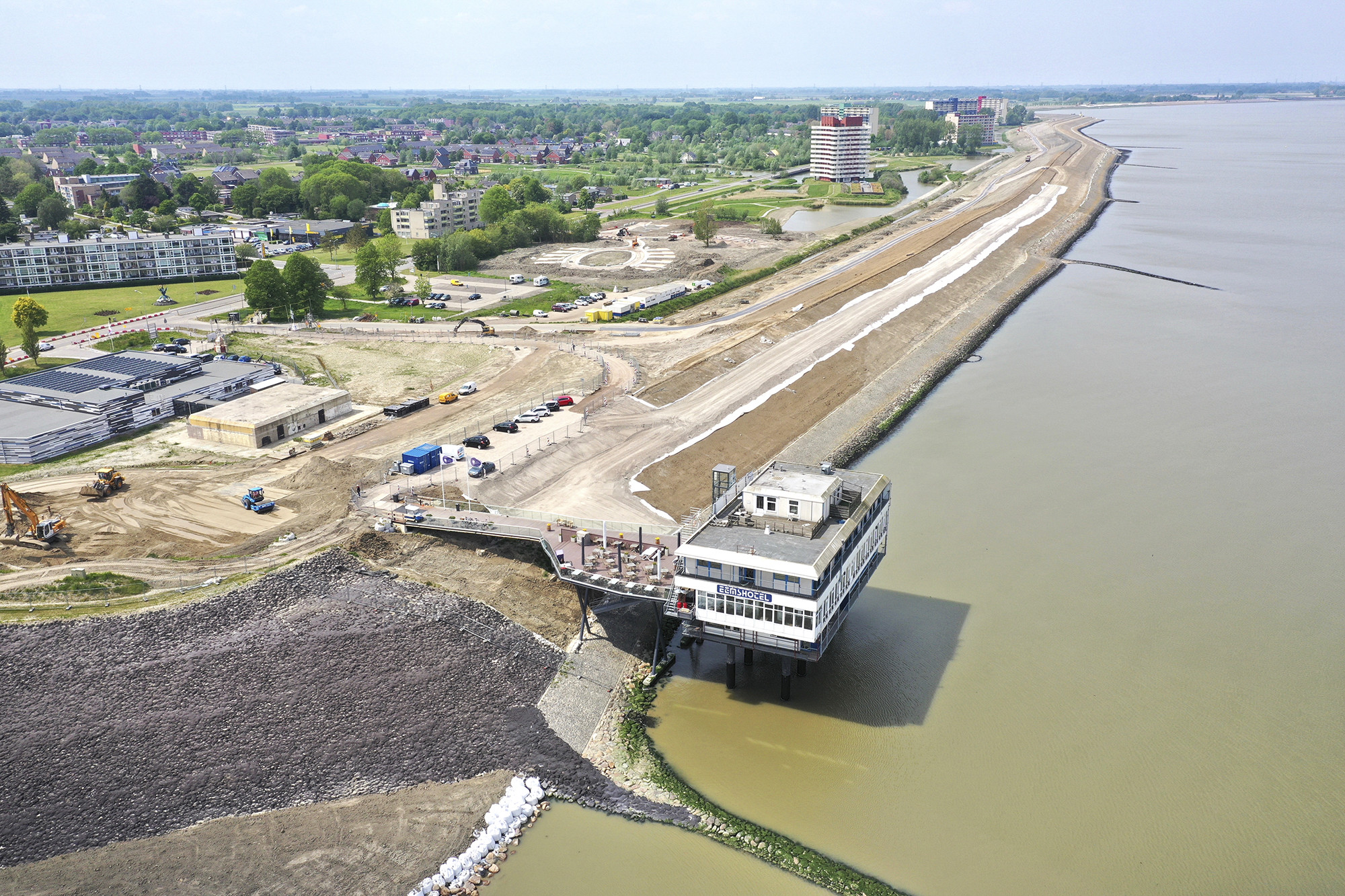
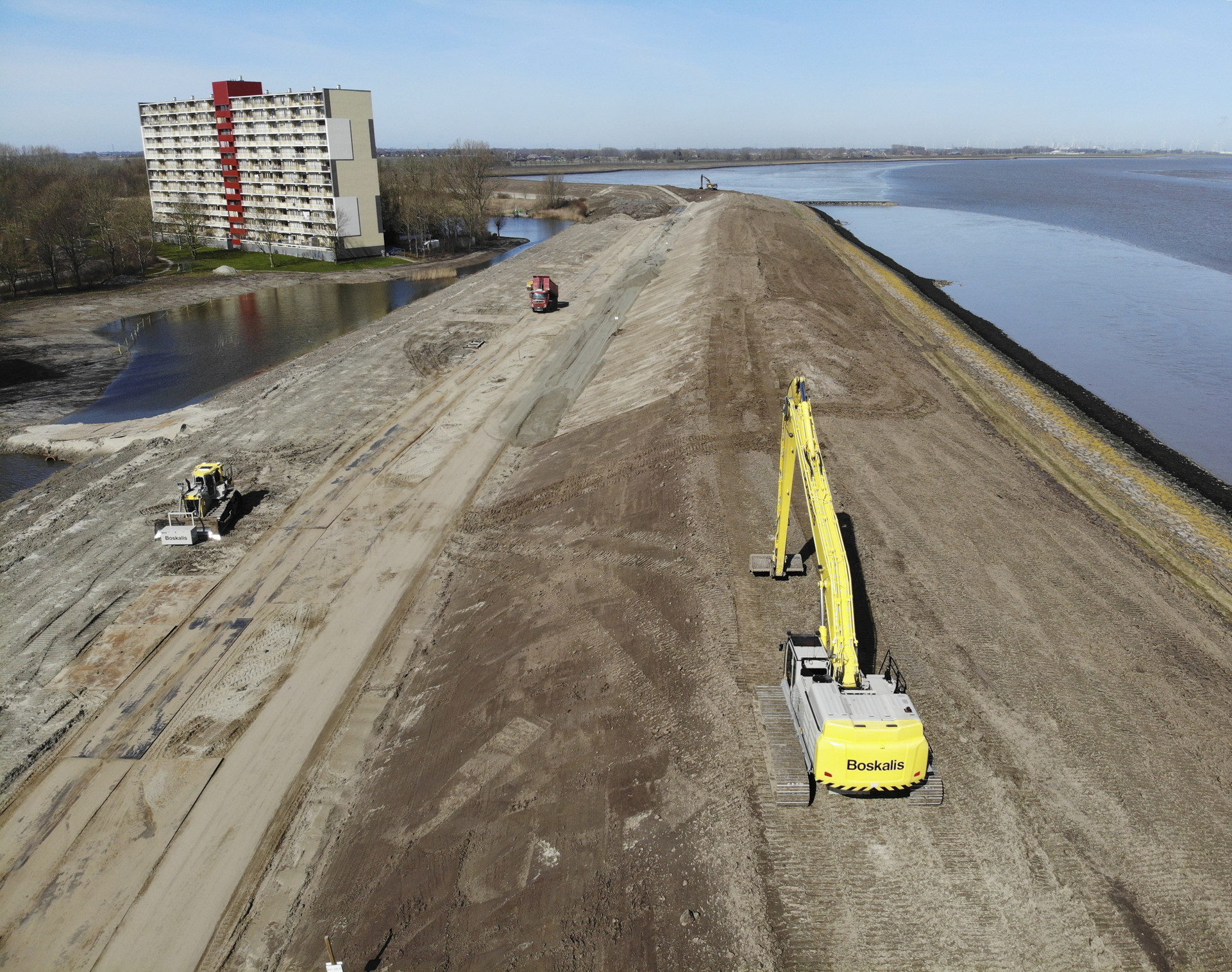
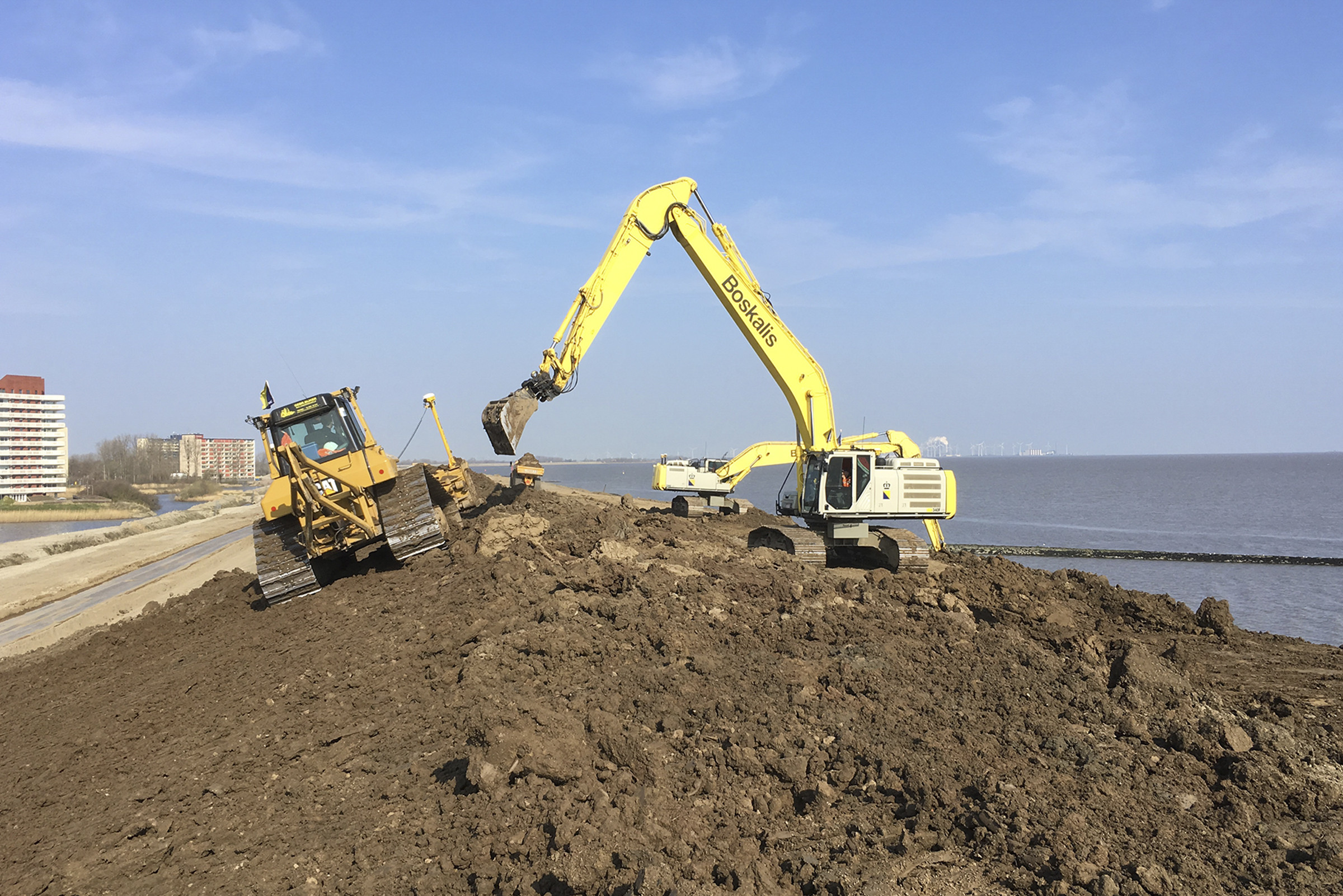
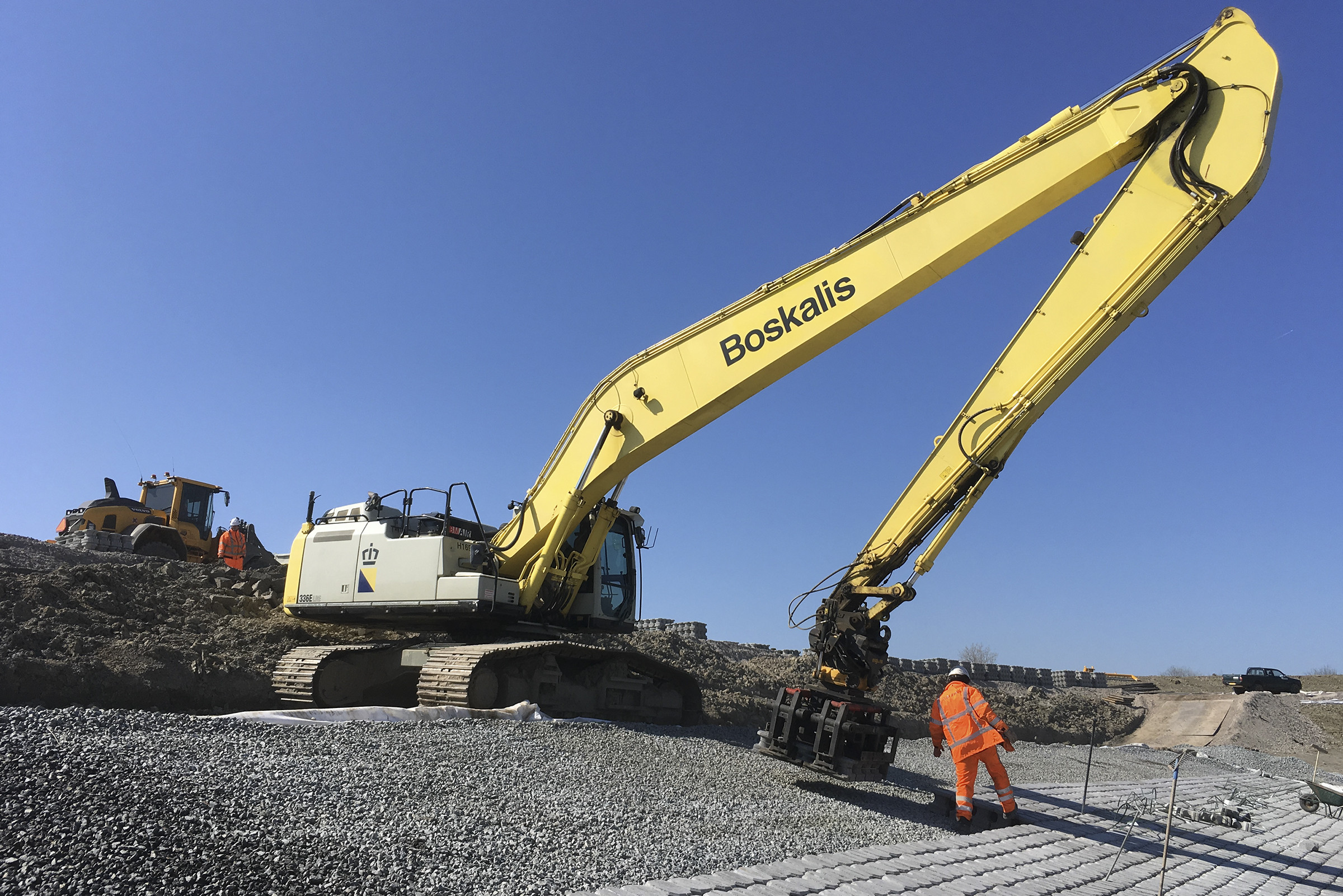
Raising and widening the Wadden Sea Dike
Boskalis has recently concluded the sizable Wadden Sea dike-upgrade project in the north of the Netherlands. “We worked with the client to find the best way to make the dike safer and to create added value for nature, recreation and livability,” says project manager Gertjan Timmers.
The project involved raising and widening the dike between Eemshaven and Delfzijl over a distance of almost twelve kilometers. The project was executed for the Noorderzijlvest water authority and was largely financed by the Dutch Flood Protection Program. “This dike upgrade was a priority because the region is affected by earthquakes and subsidence due to the extraction of natural gas. As a result the local people have gone through a lot of dramatic events in recent years, so it’s hardly surprising that they kept a critical eye on a project like this,” says Gertjan. “That means location management was a major priority for both the water authority and ourselves. We were genuinely aiming for a perfect result here.”
Strengthening the dike
“During the design phase we worked with the client to identify the most effective way to strengthen the dike,” says Gertjan. “We also tried to unburden the client during the operational phase and generally helped them every step of the way. Our expertise as well as our open and transparent approach were genuinely appreciated,” he says. “In simple terms, we have stripped the dike, strengthened it with sand and packed it in with clay again,” continues Gertjan. “Depending on the location, we raised the dike by between 50 centimeters and two meters, and we have widened it by five to twenty-five meters. That involved adding sand, clay and soil to the landward side. On the outside of the dike, we applied an innovative asphalt structure to some sections. In some places the existing revetment of Norwegian rock was reinforced with concrete. That required a total of one million cubic meters of sand, 200,000 cubic meters of clay, 70,000 tons of asphalt and additional earthmoving amounting to a volume of 450,000 cubic meters.”
Preventing dike failures
An international group of experts has looked at the measures needed to prevent dike failures if there are severe earthquakes. “On the basis of that study, it was decided to install a number of depots with a total of 30,000 cubic meters of clay behind the dike that can be used for rapid repairs of any earthquake damage,” Gertjan says. “The dike was also fitted out with a monitoring system for registering ground water levels.”
Schedule
“Sound planning was crucial on this project,” says Gertjan. “The logistics were very complex. We needed to get large quantities of raw materials into the right place in a very tight time window. It was quite a puzzle to ensure that the various itineraries and the operational phases matched, and we also had to make sure that construction traffic didn’t need to go through the villages located alongside the dike. That meant making a lot of temporary arrangements, but we managed to complete the project to the satisfaction of the client on time and within budget.”
